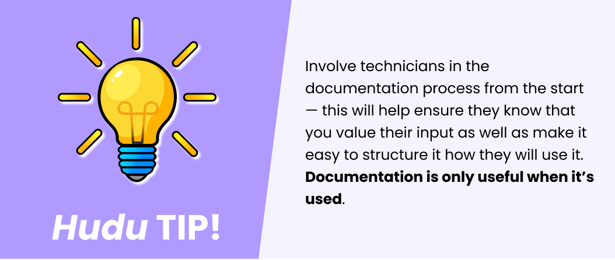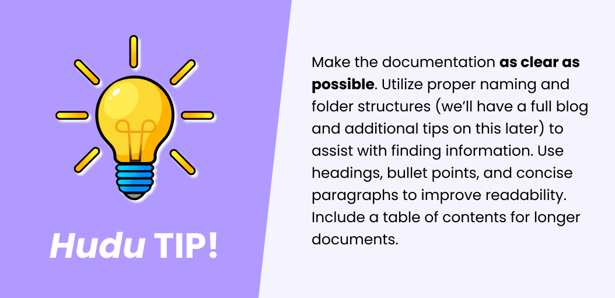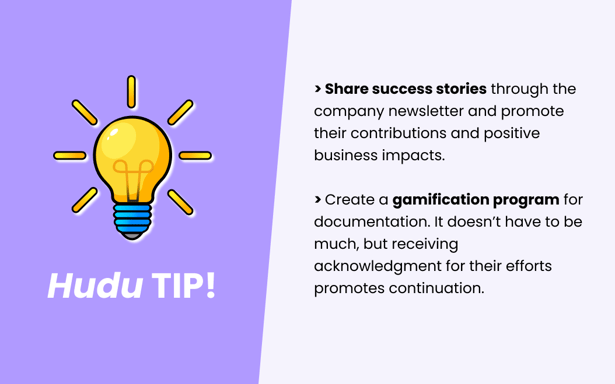
Building a Culture of Documentation
"You're not promotable unless you're replaceable."
While in college, I started my working career at a ‘mom and pop’ dive shop in Colorado. I was hired part-time to do just about anything and everything the owners didn’t want to. Mind you, although I was passionate about diving, I hadn’t the first clue about the intricacies of dive gear, sales tactics — or hell — even how to answer the phone in a professional sense. I spent the first few months learning. Reading product manuals, asking enormous amounts of questions, and listening to my coworkers share their real-life experiences. Albeit very inefficiently, I did eventually develop some independence as an employee.
By the end of my time there, although I was able to contribute a significant amount to the team (don’t worry, I’m not tooting my own horn — they told me this), it made me realize a few things:
- If any one of my coworkers hadn’t still worked there when I first joined or was too busy to answer my questions, I would have been S-O-L and likely fired.
- I caused a lot of overtime work for my employers because they spent the day holding my hand through tasks. Sorry, Jim.
- I significantly delayed my coworker’s promotion, due to him having to get me up to speed to replace him.
- And...as I was training my replacement, I realized everyone on the team was about to be in that exact same position.
Thinking back on these times makes me realize the business impact this can truly have. I learned that documentation beats conversation. If any of this information or my questions had documented answers (I was 17, I wasn’t asking them to explain rocket science), life — for everyone at the company — would have gone much smoother. All too often, the way employees learn, train, or onboard at work depends on:
and
2. Whatever documentation they can find (IF they can find it)In this article, we'll talk about the importance of a “documentation-first” approach to the culture at your organization and try to explain the benefits this can have for everyone at your business. With it, I’ll try to provide as much useful information as I have learned throughout my time working here, talking with clients, and documenting my knowledge.
Benefits of Good Documentation
Good documentation benefits the business by making it easier to hire and train employees, delighting customers along the way. It allows new hires, even those with minimal experience, to get up to speed quickly by following established guidelines. "Standing on the shoulders of giants" becomes extremely relevant with documentation — being successful in a role requires being given the opportunity to be.
For employees, good documentation allows them to do their jobs more efficiently — serving their customers and/or fellow employees quicker and more accurately. They spend less time teaching their skills to others and more time on productive work. Proper documentation means that someone else can easily step in during their absence, allowing them to take vacations or breaks without worry.
Highlighting the key benefits and some of the results you can expect to see:
Quick Access: Technicians can quickly find the information they need without wasting time searching through multiple sources.
-
- Facilitates asynchronous work, allowing teams to operate more cohesively.
- New hires can get up to speed faster by empowering them to find answers to questions as they arise, making the training process smoother.
Consistency: A central repository ensures that everyone is using the same, most up-to-date information, which reduces errors and miscommunication.
-
- Ensures clarity on how documents are created, stored, accessed, and updated.
- Stale documentation can be easily spotted, fixed, and repurposed or retired.
Efficiency: By having all documentation in one place, technicians can work more efficiently, reducing downtime and speeding up problem resolution.
-
- Avoid mistakes by providing authoritative, quality-assured guidance.
- Repeated service requests can quickly be knocked out, as the answers are documented and laid out logically.
Knowledge Sharing: It facilitates knowledge sharing across the team, ensuring that valuable insights and solutions are accessible to everyone — this means fewer meetings to get up-to-speed.
-
- Enhances flexibility in the workday by providing information whenever and wherever it’s needed.
- Prevents work duplication and missed collaboration opportunities.
Support: Technicians can provide better support as they have immediate access to the necessary documentation, leading to quicker issue resolution.
-
- Continuous access to up-to-date, accurate information.
- Decreased number of support requests, as tickets are being completed correctly the first time.
Scalability: As the organization grows, a central repository scales with it, maintaining organization and accessibility of information.
-
- Reduces reliance on co-workers for answers, minimizing the interruptions they face each day.
- Avoids bottlenecks where essential knowledge is confined to a few key individuals.
- Allows the organization to become future-proof against competitors, ensuring excellent service and customer satisfaction.
But documentation can’t exist or be useful without people. It needs people who understand and value it. Teams who will create, disseminate, use, and update it. This is where building your documentation culture comes in.
Understanding Documentation Culture
Documentation isn’t just about recording information — it’s about creating a reliable resource that supports your entire organization. When done right, it can transform the way your team works, by making processes smoother and ensuring that knowledge is preserved, accessible, and always up-to-date.
Documentation culture, as defined, is the set of behaviors, beliefs, and practices that employees demonstrate in their daily work regarding documentation. While executives may play a vital role in establishing and promoting this culture, it's at the employee level where this truly plays out.
A strong documentation culture ensures that all organizational knowledge is captured and stored in a central repository — making it easily accessible, comprehensible, and well-known throughout the team. Good documentation can turn from an administrative overhead into a living, breathing part of the organization, radiating value for individuals and the entire workforce.
How to Build a Strong Documentation Culture
Set your team up for success
Take Inventory: Start by revisiting your current documentation — auditing your existing processes and guides allows you to identify any gaps in your documentation and shows you what needs to be created, updated, or archived.

Set clear guidelines: Make sure that your employees understand what’s expected of them. How, where, and when you want information documented helps to reinforce its’ adoption.

Share ownership: Everyone is an expert at something; let them show this. Give individuals direct responsibility for documenting information in relevant business areas. Be clear about your expectations and empower them to share new ideas.

Make it Easy
Start small (and build on it): Start with documenting the most important and critical information first. As mentioned, documentation is a living part of your organization, and creating a documentation-first culture does not happen overnight.

Invest in the right tools: Just because you can make software work for what you’re trying to accomplish, does not mean that it’s the product you should be using. Invest in proper documentation software that can be adapted to your needs.

Leverage the software: Documentation software typically has a variety of tools to assist with increasing the usability of your information. Focus on clarity and ease of use for your technicians—they are the end-users, so keep in mind HOW you can enable them to best use it.



Make it Fun
Recognize the stars: Having documentation champions within your organization is crucial for a successful culture, recognize these users.

Reward employees: Employees who consistently contribute to documentation efforts should be incentivized to continue.

Highlight the benefits: Although good documentation does benefit the organization as a whole, remind your team of the benefits that they will also receive from partaking:
- Faster resolution of tickets and client requests.
- Reduces their personal time investment requirements.
- More independence in their workflow.
- Happy customers.
- And so many more...
Make it stick
Measure your documentation: Scaling company knowledge doesn’t happen overnight. It happens with small, consistent steps that create a strong culture of documentation. You should always review your documentation to ensure it’s working and (more importantly) working for your technicians.
- Qualitatively, successful documentation means employees are getting their work done faster, without interruptions and/or extra meetings.
- Quantitatively, measure the views and production rates of the documentation your team creates. This helps you identify where people are getting stuck in a process and how you can improve it.
Training should be ongoing: Provide regular training and support in documentation frameworks, knowledge management, and new tools to integrate documentation seamlessly.

Wrapping it Up
Remember: Documentation beats conversation.
When company knowledge is siloed, scattered, and disconnected from the people who need it, their jobs become much harder. This slows down the entire organization. By implementing a strong documentation culture and following these recommendations, your organization can improve efficiency, support better decision-making, and enhance overall service quality.
As we move forward with our series, we’ll dive deeper into specific strategies, best practices, and tips to help you foster a robust documentation culture. Each quarter, we’ll explore different main topics, providing actionable insights and practical advice to elevate your documentation practices. Stay tuned as we guide you on this journey to make documentation a seamless, integral part of your organizational workflow, ensuring that everyone from your newest hire to your most seasoned executive can access the knowledge they need, exactly when they need it.
More from Hudu...
View All PostsSubscribe to Our Blog
Stay up-to-date on all Hudu happenings including releases and articles.

